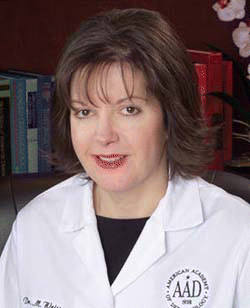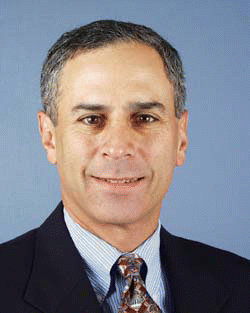These days, it is not uncommon for doctors from all types of specialties to offer aesthetic procedures for the face, such as filler and Botox injections for wrinkles and superficial peels with lasers or glycolic acid to remove sunspots and wrinkles. According to a recent New York Times article, obstetrician/gynecologists, family physicians, and other doctors are offering these services to patients after completing only brief training, and patients may not be savvy enough to question their credentials. The incursion of non-core physicians into the turf of facial plastic surgeons and dermatologists is worrisome to some core physicians for several reasons: threats related to loss of income and potential dangers to patients. Additionally, some worry that this is a slippery slope and that some of these non-core physicians will turn to more invasive procedures, increasing the dangers of surgery gone awry to unsuspecting patients.

Why They Do It
Core physicians interviewed for this article agreed that one of the main reasons non-core physicians are opting to offer superficial cosmetic procedures is a quick and uncomplicated financial reward. Superficial cosmetic procedures procedures are relatively easy to learn and to perform, are low-risk, and are not reimbursable by insurance companies, so customers pay cash. Little or no paperwork is involved, and hardly any staff time is taken up with billing and collecting fees.
The main reason non-core physicians are entering this arena is financial. The physician can take advantage of cash payments without the need to bill third-party payers. This is a short-circuit way for them to improve their bottom line, because these procedures are easy to do and there is a fast turnover, said Shan Baker, MD, President of the American Board of Facial and Plastic Reconstructive Surgeons (ABFPRS).
Dr. Baker believes that it is not particularly dangerous for non-core physicians who are well trained to offer superficial cosmetic treatments such as fillers and peels. But he sees this as a first step by non-board-certified physicians to get into more complex surgical procedures that he believes could be dangerous for patients, such as chemical peels, face lifts, and dermabrasion.
With more complex procedures, it becomes a quality of care issue. Patients are confused and don’t really know if a doctor is adequately trained to perform these procedures. They should be made aware of the need to have proper credentials, he said.
Another facial plastic surgeon, Peter Hilger, MD, is also concerned about dangers to patients. If the primary motive is to make money, I am troubled about the quality of care, he said. Finances should not be the main motive. Dr. Hilger is in private practice in Edina, Minn., and is President of the American Academy of Facial and Plastic Reconstructive Surgeons (AAFPRS) and senior advisor to ABFPRS.
Other Reasons
In addition to the financial incentive, cosmetic procedures are fun and rewarding to perform, said Mary Lynn Moran, MD, a solo practitioner in Woodside, Calif., who is a board member of both ABFPRS and AAFPRS. It’s a ‘feel-good’ kind of field, and the financial return can be greater than for other office-based activities, she said.
Dr. Moran, a member of the California Medical Board, commented that she is often surprised by which physicians are willing to cross the line and offer procedures for which they are not certified. The reality is that MDs can offer any procedure they want until they make a mistake and get caught, she said.
Another View
Cosmetic procedures represent a growing market. Many physicians have seen their income reduced by reimbursement and competition, and the cost of insuring their medical practices is high. Cosmetic procedures can expand their practice into a cash business. These procedures, like fillers and Botox, are easy to learn, although not necessarily to do well, and don’t require extensive training, said Ira Papel, MD, Vice President of the ABFPRS and Immediate Past President of AAFPRS.
Dr. Papel was more sanguine than other interviewees about non-core physicians performing superficial cosmetic procedures. Many dermatologists and facial plastic surgeons are against this. I’m not sure I’m against fully trained medical doctors wanting to offer low-risk procedures that don’t take a lot of training. Why begrudge fellow physicians the income, as long as the procedures are done in a safe and honest way? he said. On the other hand, he said that surgical procedures should be performed only by board-certified surgeons.
Dangers of Superficial Procedures
Superficial procedures are not completely risk-free, Dr. Hilger commented. He treated a patient who developed a hematoma when a neurologist injected Botox into the forehead. I had to drain half an ounce of blood from that patient’s forehead, he noted. Also, he has seen patients with skin sloughs due to injections that killed the blood supply when fillers were injected by non-core physicians.
Dr. Papel has not seen any serious complications in his practice. He said that the worst that could happen is that filler or Botox could be injected into the wrong place on the face, but if this happens, it resolves spontaneously within a few months without the need for further correction.
Problems can arise if the wrong filler is used, however. Filler companies market directly to physicians, and these companies don’t check the credentials of physicians who buy lasers, fillers, and other products, Dr. Baker said. Dr. Baker also emphasized the need to use quality products. Non-core physicians should take care to purchase Botox and fillers that are specified for human use from quality suppliers, he commented. He gave an example of a physician who used veterinary filler on his patients and one of them had to be hospitalized for acute care. That physician lost his license, Dr. Baker said.
Weighing in on this issue was Margaret Weiss, MD, a board-certified dermatologist in private practice at the Maryland Skin and Vein Institute, LLC, in Hunt Valley, Md., and Assistant Professor of Dermatology at Johns Hopkins Medical School, who has performed thousands of cosmetic procedures over the past 24 years. Industry’s actions are worrisome. They will sell filler or devices to physicians without checking how and where those products will be used, she said.
Invasive Procedures
Experts interviewed for this article agreed that invasive procedures represent unsafe territory for non-core physicians. Blepharoplasty, rhinoplasty, and surgical face lifts should be performed only by board-certified surgeons-either a facial plastic surgeon, otolaryngologist, or plastic surgeon, Dr. Papel said. He believes that the numbers of non-core physicians who try to do invasive procedures are small. It’s uncommon in my practice that we have to correct facial surgery gone awry, he noted.
Dr. Baker considers hair removal and peels as risky. He has heard anecdotes about complications from surgical face lifts and blepharoplasty performed by dermatologists, but has not had to correct these procedures himself. You need a residency in plastic surgery or otolaryngology to perform more invasive procedures, he said.
Dr. Moran believes that it is not that rare for invasive procedures to be done by nonspecialists without proper training. However, she also said that some facial plastic surgeons offer invasive surgical procedures for other parts of the body. I don’t agree with that either, she noted.
Remedial Measures
What, if anything, can be done to stem this trend? Dr. Hilger said the key is education-for both patients and physicians. Patients need to know about what cosmetic procedures entail and have reasonable expectations. They also should ask about the doctor’s credentials. He recommended a patient-physician consultation prior to undergoing a cosmetic procedure, giving the patient time to reflect and make a decision.
Patients need to be informed about what to expect. Unrealized expectations are the major complication of superficial procedures, he said.
Physicians who perform superficial cosmetic procedures need a thorough grounding in the basics-not just a weekend training, Dr. Hilger said. They need to learn the anatomy and physiology of the face and have an understanding of aesthetics. They should understand the uses of various techniques and the different products. For example, Botox is good for dynamic wrinkles, whereas fillers should be used for static wrinkles.
The goal is to make people look better. Just making lips bigger could make a person look weird, depending on the patient’s face, Dr. Hilger said.
Equally important is being able to recognize and manage complications. Just because someone is a medical doctor does not mean that he or she can do these procedures in a responsible way without proper training. I delivered babies in medical school. Now I wouldn’t consider doing that, Dr. Hilger said.
Public Education
Dr. Moran advocated public education by facial plastic surgeons about their practices and their qualifications for the procedures they perform, without badmouthing other physicians. She said that patients need to know that a ‘bargain’ is usually no bargain. In her marketing materials, she lists her qualifications and emphasizes that she performs all the procedures herself. She noted that AAFPRS and ABFPRS have issued calls to action regarding this issue.
Dr. Baker agreed that public education is the best approach. The public should know what board certification means. ABFPRS already has educational efforts in place, he noted.
Dr. Papel has a different viewpoint. It’s not a problem for my practice. I can’t argue with any doctor who takes the time to learn a superficial procedure and then offers it to patients. Most practicing physicians [in any specialty] do not learn about Botox and fillers in their residence programs, he said.
Dr. Weiss, the dermatologist, said that tighter state regulations are needed regarding which practitioners can legally perform cosmetic procedures. She finds the growing trend of medical spas worrisome, because often the medical director is not on site and does not see patients prior to having procedures done by others, at times cosmeticians. The state of Florida recently passed legislation limiting the number of spas a physician could direct, as well as setting geographic limits as to how far away the medical director could be from the facility. Other states should follow suit, she said.
States need to have better regulations and if regulations are in place, states need to enforce them, Dr. Weiss commented.
She also believes that patients should be more proactive in checking credentials and training of physicians and not agree to be treated by non-physicians who are not supervised by an experienced and well-trained physician.
NJ Governor Vetoes Repeal of Cosmetic Surgery Tax
Weeks after the state legislature unanimously passed legislation to repeal the state’s gross receipts tax on cosmetic surgery, New Jersey Governor Jon S. Corzine vetoed A-2282 on January 26; as of press time, supporters of the legislation were considering their options. The tax was enacted in June 2004 to help balance the state budget but the bill’s sponsors said its effect was to push consumers to go to states without the tax for cosmetic surgery.
Gov. Corzine, in his veto statement, noted that the tax generated $10 million for the state’s charity care program in 2006. I cannot support repealing this tax, midway through the fiscal year, without establishing an alternative revenue stream to support charity care, he said.
As part of advocacy efforts in support of the tax repeal, more than 60 New Jersey surgeons used the Surgery State Legislative Action Center (www.facs.org /sslac/index.html) to contact the governor’s office.
©2007 The Triological Society


Leave a Reply